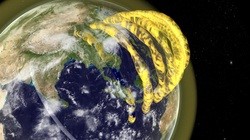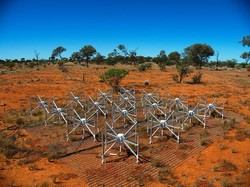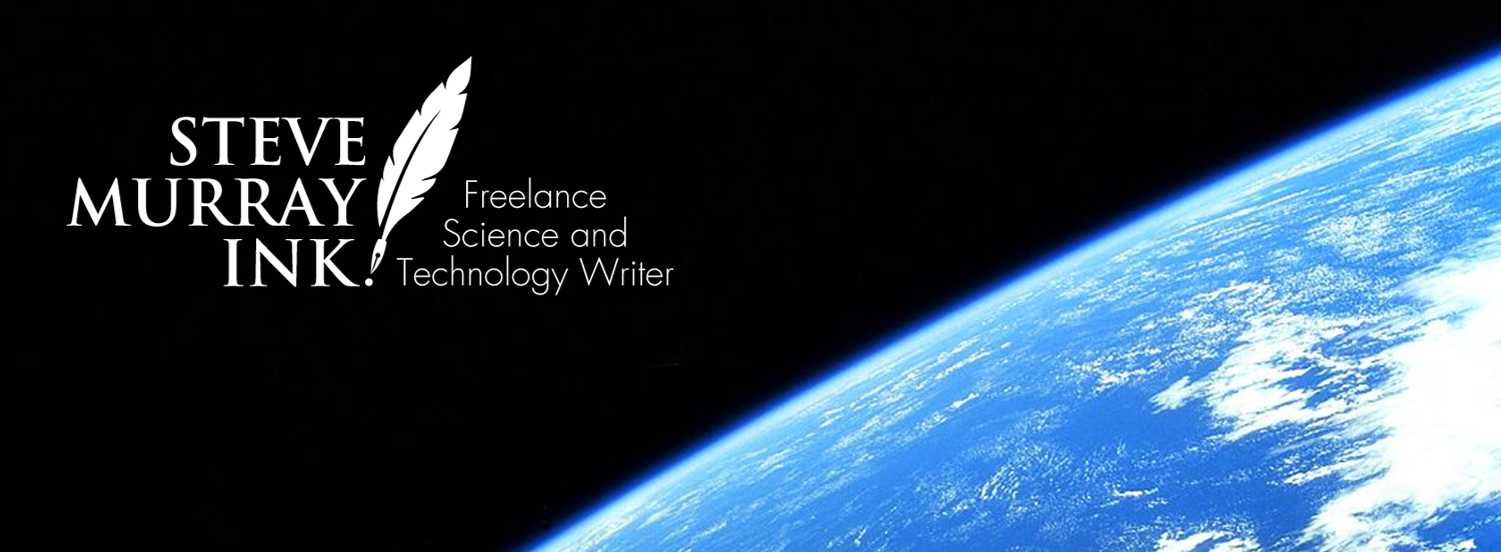June 21, 2015 by Steve Murray
Magnetosphere Movies – Imaging Plasma Structures in 3D

Artist’s impression of tubular plasma structures (CAASTRO/Mats Bjorkland)
“First ever” astronomy discoveries can come from new instruments, like the James Webb Space Telescope or the European Extremely Large Telescope (both still under construction).
They can also come from novel uses of existing instruments.
A team of astronomers has recently detected the existence oftubular plasma structures in Earth’s magnetosphere. And, through clever use of a radio telescope, they imaged these tube structures in 3D, verifying a 60-year-old theory.
Cleo Loi is the lead author of the study, which was part of her undergraduate thesis. The 23-year-old graduate student is from the ARC Centre for Excellence for All-sky Astrophysics (CAASTRO) and School of Physics at the University of Sydney.
Solar dynamics above the earth
The research focused on dynamics of the magnetosphere, the region surrounding the planet formed by the interaction of the solar wind with Earth’s magnetic field. The solar wind consists of streams of charged particles. The Earth’s magnetic field deflects some of these particles and channels others towards the poles, giving rise to phenomena like aurora.
This interaction ionizes the atmosphere, creating plasma, a mix of positive ions and free electrons. While the magnetosphere is filled with regions of plasma, little is known about their structure, although astronomers have theorized about possible tubular characteristics for decades.
“People theorized something like this from observations of a type of very low frequency electromagnetic wave, said Ms. Loi. “We can detect lightning from another hemisphere and people concluded there must be plasma tubes guiding the signal. It’s a very indirect conclusion, and no one had much idea what these tubes were like.”

MWA 32T tile (Natasha Hurley-Walker – own work. Licensed under CC BY-SA 3.0 via Wikimedia Commons)
Ms. Loi and her team mapped large patches of sky using the Murchison Wide Field Array (MWA) in Western Australia. This radio telescope consists of 128 antenna “tiles” separated by distances of up to 1.8 miles (3 km). The tiles are integrated to function as a single, wide-baseline instrument.
The survey revealed a variety of strange plasma shapes. Their measurements showed that the structures were embedded in the upper ionosphere, about 370 miles (600 kilometers) above the ground, and extended up into the plasmasphere. The researchers exploited a rapid snapshot capability of the MWA to create a movie of plasma movement.
“We saw a striking pattern in the sky where stripes of high-density plasma neatly alternated with stripes of low-density plasma,” said Ms. Loi. “This pattern drifted slowly and aligned beautifully with the Earth’s magnetic field lines, like aurorae.”
“We realized we may be onto something big and things got even better when we invented a new way of using the MWA.”
Radio astronomy in stereo
By electronically separating the radio signals of tiles in the east of the array from tiles in the west, the project team added a form of stereoscopic vision to the MWA. This was an entirely new technique for astronomers, enabling 3D imaging that could measure the spacing between the plasma structures and, through time-lapse imaging, watch them move around.
For most astronomical work, the distribution of the MWA tiles wouldn’t provide the parallax needed for stereoscopic imaging like this, but because the plasma layers are so close to the Earth, the technique worked exactly as planned.
The role of the structures
Ms. Loi suggests that these structures may have a role in moderating the energy in the radiation belt around the Earth.
“The discovery of the structures is important because they cause unwanted signal distortions that could, as one example, affect our civilian and military satellite-based navigation systems,” said Ms. Loi. “So we need to understand them.”
The findings were published online by the journal Geophysical Research Letters on May 25, 2015.
Ms. Loi said she was amazed at how many tubes were revealed by the MWA 30° field of view, and is looking forward to what might be accomplished with theSquare Kilometre Array (SKA) Telescope, still under construction.
“There are no plans to use the SKA for studying the ionosphere,” she said. “But I am hoping, with publicity about this work, to change that.”
Ms. Loi was awarded the 2015 Bok Prize of the Astronomical Society of Australia for her work, so her voice should carry some weight among science agencies.
Primary source: Cosmic cinema: astronomers make real-time, 3D movies of plasma tubes drifting overhead
